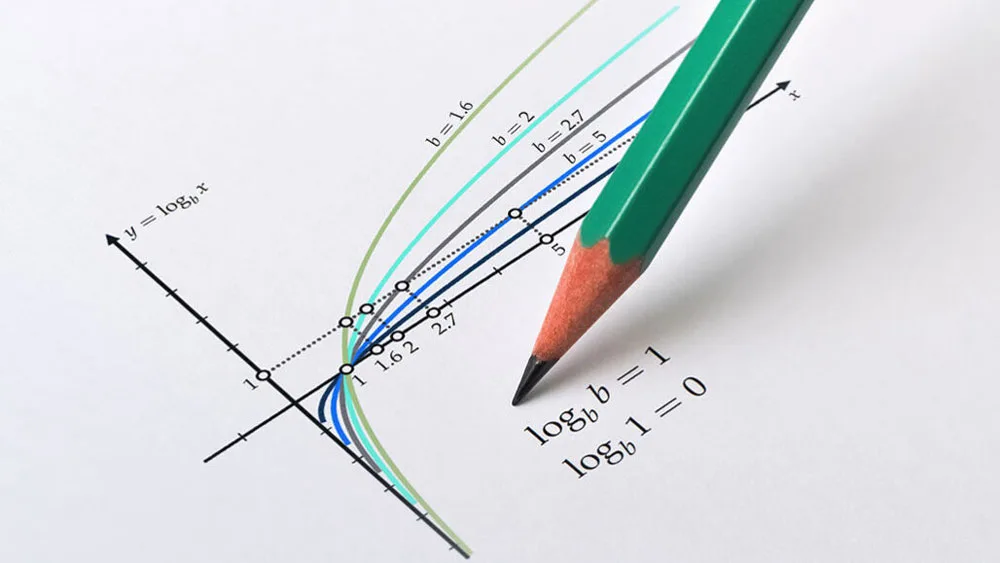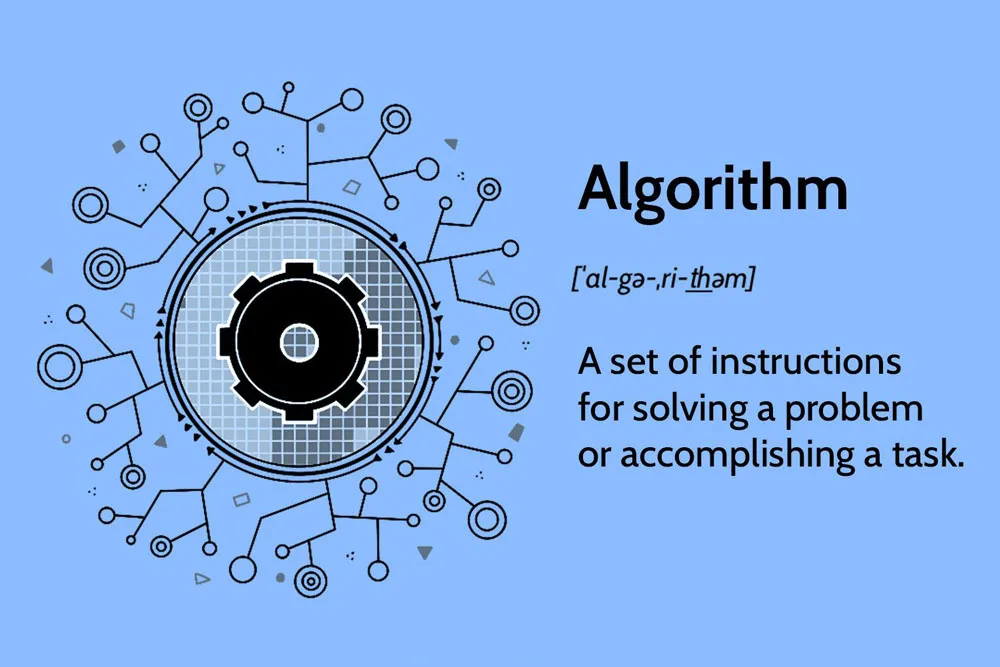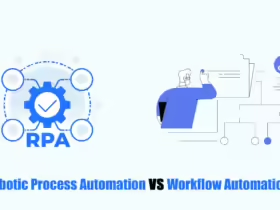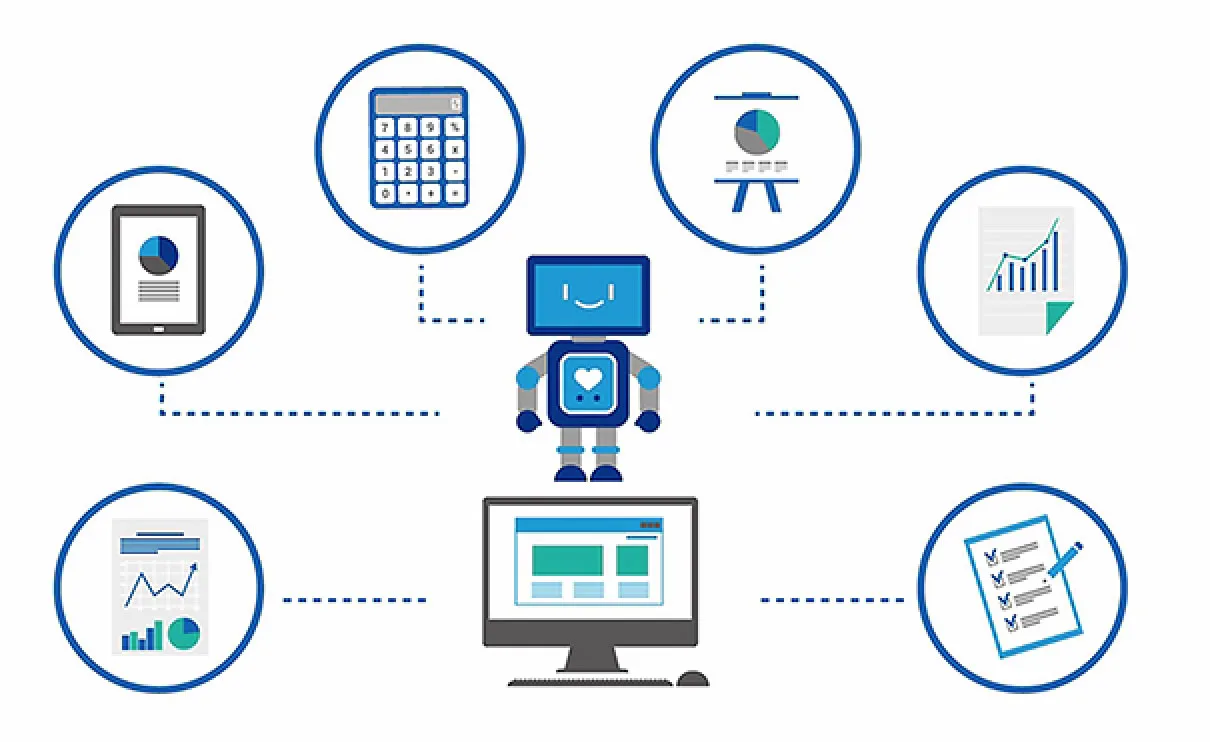Ever wondered how Google finds exactly what you’re looking for in a fraction of a second? Or how Spotify predicts your next favorite song before you even know it exists? Magic? Nope, logarithms and algorithms are working behind the scenes like an AI-powered dynamic duo.
It doesn’t stop there, whether it’s AI medical diagnostics or self-driving cars, these two concepts form the mathematical backbone of modern technology.
In this article, we’ll discuss their definitions, types, and their impact on different fields.
What is a Logarithm?

At its core, a logarithm is simply a way of counting in multiplicative steps instead of additive ones.
Think of it like this:
- If you count 1, 2, 3, 4…, you’re moving in linear steps.
- If you count 1, 10, 100, 1000…, you’re moving in logarithmic steps.
In daily life, linear thinking works fine for small numbers, but it breaks down when numbers become huge. That’s where logarithms come in. They compress reality, turning overwhelming scales into manageable steps.
Why do they matter? Because nature, computing, and intelligence don’t operate linearly. They evolve, grow, and compute logarithmically.
Types of Logarithms
In most cases, we’re typically dealing with two different types of logarithms.
Common Logarithm
The common logarithm is also known as the base 10 logarithm, and it’s simply written as log10 or just log. For instance, the common logarithm of 1000 is written as log(1000). It tells you how many times you need to multiply the number 10 by itself to get a certain result.
Consider this illustration: log(100)=2. This means if you multiply 10 by itself twice (10×10), you get 100.
Natural Logarithm
The natural logarithm is specifically known as the base e logarithm. It’s commonly represented as ln or loge. In this context, “e” refers to Euler’s constant, which has an approximate value of 2.71828. For example, the natural logarithm of 78 is written as ln78. It tells you how many times you need to multiply “e” by itself to get a certain result.
For instance, ln(78)=4.357. This means the base e logarithm of 78 is equal to 4.357.
Logarithms in AI and Learning
Artificial intelligence doesn’t simply “learn” in a linear progression. Instead, it adapts, fine-tunes its understanding, and ultimately converges logarithmically.
- Log-Loss Function: AI models use logarithmic functions to measure how far off they are from the right answer. A small error gets a mild penalty, while a big error gets an exponentially larger one.
- Softmax Function: AI doesn’t just output raw numbers; it turns them into probabilities. The softmax function, which powers neural networks in image recognition and natural language processing, applies logarithmic scaling to stabilize predictions.
- Gradient Descent: When training deep learning models, weights are adjusted logarithmically to avoid overshooting the best solution. Without these logarithmic adjustments, models would swing wildly and never settle.
Without the underlying principles of logarithms, artificial intelligence would manifest as an unpredictable collection of numbers rather than the intelligent, adaptable system we observe today.
Logarithms in Agriculture
Even in farming, logarithms play a critical role:
- Plant growth models use logarithms to predict yield over time.
- Pest infestation models follow exponential curves, requiring logarithmic mitigation strategies.
What is an Algorithm?

An algorithm is simply a step-by-step set of instructions designed to perform a task.
Making a cup of tea? That’s an algorithm!
Computers follow the same idea, just with billions of operations per second.
Whether you’re Googling something, streaming Netflix, driving a Tesla, or training an AI model, you’re relying on algorithms. Without algorithms, computers would be glorified paperweights.
Types of Algorithms
Not all algorithms are built the same. Some are made to sort data, some to learn patterns, and others to make results better.
Let’s break them down:
Sorting Algorithms
Imagine walking into a messy room with clothes everywhere. Sorting algorithms are like Marie Kondo for data—they bring order to chaos.
Some of the most famous ones include:
- QuickSort & MergeSort: Efficiently sort large datasets.
- Bubble Sort: Slow but easy to understand (not really used in serious computing).
Without sorting algorithms, your e-commerce site wouldn’t know how to rank products “cheapest to most expensive”!
Real-life examples:
- When you sort your email inbox by date, you’re using a sorting algorithm.
- When an airline books passengers by last name, a sorting algorithm is at work.
Without sorting algorithms, finding anything in a database would be like searching for a needle in a haystack—blindfolded.
Machine Learning Algorithms
AI doesn’t just run on one algorithm and it uses hundreds working together.
Some of the most powerful ones include:
- Neural Networks: Inspired by the human brain, these algorithms power speech recognition (like Siri), computer vision (in self-driving cars), and recommendation systems (Netflix, YouTube).
- Decision Trees & Random Forests: These are used in fraud detection, medical diagnosis, and risk assessment.
- Reinforcement Learning: This powers AI in robotics, gaming (think DeepMind’s AlphaGo and OpenAI’s Dota 2 bot), and self-driving cars.
Real-life examples:
- Spotify’s music recommendations are powered by machine learning algorithms.
- AI chatbots that mimic human conversation, that’s machine learning at work.
Machine learning algorithms are why AI feels intelligent instead of just a rule-based system.
Optimization Algorithms
Some problems don’t have a simple best answer. That’s where optimization algorithms step in.
- Gradient Descent: The backbone of deep learning. It adjusts AI model parameters to minimize error and improve predictions.
- Genetic Algorithms: Inspired by evolution, these are used in robotics, game AI, and complex problem-solving.
- A* (A-star) Algorithm: The reason Google Maps finds the shortest route from Point A to Point B.
The Influence of Algorithms
If logarithms structure information, then algorithms decide what to do with it.
Here’s how:
- Google Search: Ever wondered how Google finds the best answer in fractions of a second? It runs sophisticated search algorithms that rank pages based on keywords, relevance, and user engagement.
- Self-Driving Cars: Algorithms process real-time sensor data, predicting other cars’ movements and adjusting steering, acceleration, and braking.
- Netflix & YouTube Recommendations: Algorithms analyze your watching habits, learning your preferences and serving you content that keeps you hooked.
- AI Chatbots & Assistants: Your Siri or Alexa follows algorithms to process speech, extract meaning, and generate intelligent responses.
Final Thoughts
You’ve just learned that logarithms and algorithms are the quiet powerhouses behind modern computing, AI, and the world around us. If logarithms and algorithms work together, this will create a dynamic duo—one boosting speed, the other ensuring accuracy.









